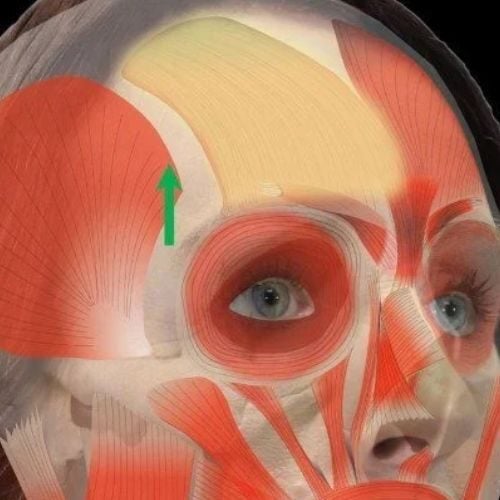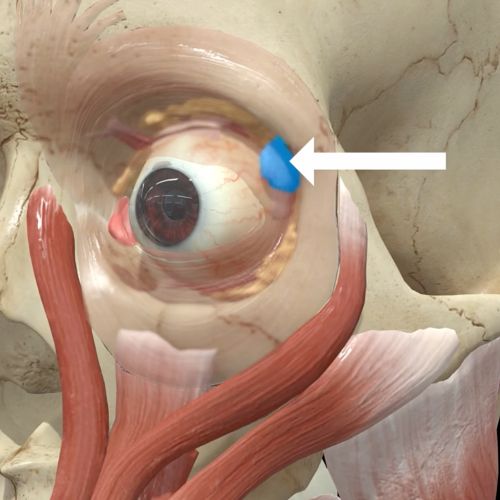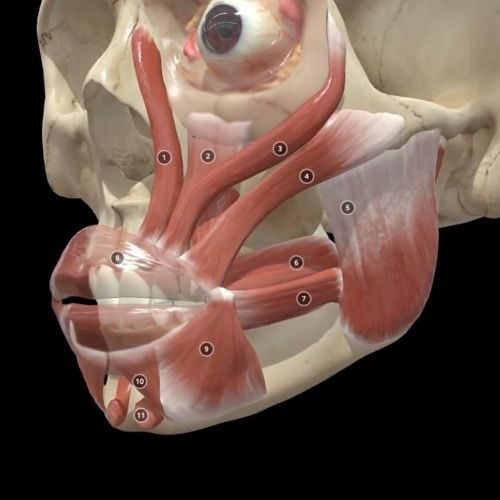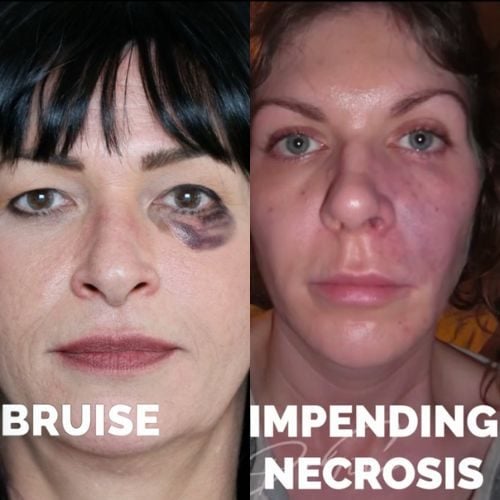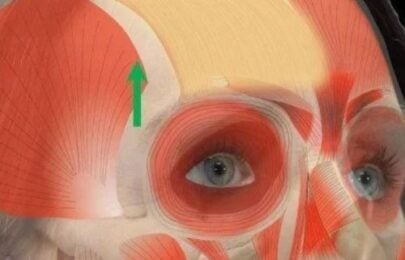- Mail us: support@drtimpearce.com
Guide: The best botulinum toxin (Botox) injection depths
You may be interested
 Dr Tim Pearce
Dr Tim Pearce

Anti-wrinkle injections with botulinum toxin or Botox® may appear as simple procedures for aesthetic clinicians, but it can be difficult to know the correct depths to inject the neurotoxin, causing many practitioners to have reasonable concerns about causing complications by injecting too deeply.
In this blog, Dr Tim Pearce explains the different injection depths and their meaning – superficial, intermediate, and deep – that are required in different areas of the face to stay safe and create the best results for your patients, by avoiding complications including eyelid ptosis and asymmetrical smiles.
What causes an eyelid ptosis?
 Dr Tim notes that the foundation of your understanding of injecting botulinum toxins, and the ability to inject them safely, is based on your anatomy knowledge. Eyelid ptosis is not caused by injecting the eyelid. It is caused by getting botulinum toxin into the orbit where the levator palpebrae muscle – the muscle that lifts the eyelid – is located. This muscle runs all the way to the back of the orbit. To affect it, botulinum toxin must get behind the orbital membrane and that can only be achieved with an injection that is too deep.
Dr Tim notes that the foundation of your understanding of injecting botulinum toxins, and the ability to inject them safely, is based on your anatomy knowledge. Eyelid ptosis is not caused by injecting the eyelid. It is caused by getting botulinum toxin into the orbit where the levator palpebrae muscle – the muscle that lifts the eyelid – is located. This muscle runs all the way to the back of the orbit. To affect it, botulinum toxin must get behind the orbital membrane and that can only be achieved with an injection that is too deep.
Read more on how to identify and fix eyelid ptosis caused by Botox injections and learn the eye anatomy to prevent eyelid ptosis from Botox®. Similarly, you can read up on what causes brow ptosis too.
What are the downsides of injecting too deeply?
This is anatomy specific, reminds Dr Tim. There are parts of the face where injecting deeply is safer, and there are other parts of the face where it is riskier. Thus, it is vital to learn about common injection positions on the face, and where it is safe to be deep and where it is not.
For example, when treating around the eye and the lateral corrugator, which is just above the mid-papillary line, the muscle is very close or inserted into the skin. Therefore, injecting anything beneath that presents a risk without reward. The foramina – the passages through which the blood vessels, nerves, and arteries pass from the orbit – are located here and would be very close to any deep injection points; this means that injecting deeply above the eye is risky.
However, there are parts of the face where it may be more effective or even safer to inject deeply. Examples include the masseter muscle, the chin, and the medial corrugator, due to the anatomy of the muscle.
If we consider the medial corrugator, for example. It is directly attached to the bone medially which means that if your injection is deep, you are right in the middle of the muscle. Dr Tim usually injects three-quarters of the way; this is not a periosteal injection, but it is deeper than when treating the lateral corrugator because of the location and trajectory of the muscle. You should be injecting the muscle and not underneath it after all.
The most common area for mistakes, that Dr Tim notes with newer injectors is around the orbicularis oculi muscle, particularly the inferior lateral part of the eye. The orbicularis oculi muscle is the most superficial – there is a thin layer of skin, followed by a thin fat layer, and then the muscle – thus, you only need to insert the bevel of the needle by approximately one to two millimetres to be right on top of the muscle. If you are trying to reduce wrinkles here, but you inject through the muscle, you will come to the origin of the zygomaticus major muscle. In theory, injecting at this point can lead to a droopy or asymmetrical smile for the patient, particularly if you are too inferior, making injecting deeply into the orbicularis oculi area particularly risky for causing a terrible side effect.
Dr Tim explains what can go wrong when treating orbicularis oculi with Botox and more of the common mistakes aesthetic clinicians make with Botox injections.
Where must you ensure you inject botulinum toxin superficially?
One of the best examples, states Dr Tim would be the superior aspect of the orbicularis oculi muscle, just underneath the eyebrow, when you are trying to create a little bit of an eyebrow lift. In this area, you are injecting just through the dermis, right on top of the muscle. Underneath the muscle is a thin layer of fat and beyond is the area of the orbital membrane and the orbit itself. This is why complications can occur if the injection is not superficial. There is simply no benefit to the effect of injecting deeper here, or when you are trying to inject anywhere around the orbicularis oculi muscle, there are only risks.
Dr Tim walks you through how to inject Botox under the eyebrow for a brow lift and asks if you can inject Botox towards the eye.
What is the difference in millimetres between superficial, intermediate, and deep injections?
Many of Dr Tim’s audience would like him to describe specific millimetre-by-millimetre depths when he talks about superficial, intermediate, or deep injections, but this is impractical because the injections are all relative to the main tissue layers of the face. There is the dermis, the hypodermic fat, usually muscle, and then the periosteum, as a simplified model. Deep injections are near the periosteum, and very superficial injections are near the dermis, with intermediate injections somewhere in between.
 Dr Tim further explains that if you are looking at different aspects of the face, the difference in millimetres will be significant. Therefore, he cannot give measurements because it is all relative to the place where you are injecting and you must, instead, understand the layers, have knowledge of the anatomy, and what it feels like to be in the different tissue layers.
Dr Tim further explains that if you are looking at different aspects of the face, the difference in millimetres will be significant. Therefore, he cannot give measurements because it is all relative to the place where you are injecting and you must, instead, understand the layers, have knowledge of the anatomy, and what it feels like to be in the different tissue layers.
For example, looking at the forehead, if he were to recommend a superficial injection in the forehead, he would mean within the dermis. But, how do you know that you are in the dermis? As you inject, you will see the skin blanch, and it is quite stiff at the point of injecting because of the resistance from the connective tissue on the movement of the syringe plunger as you try to inject. However, if you go a little bit deeper, you will be within the hypodermic fat and there will be a sudden ease as the needle has passed through the connective tissue allowing you to inject more readily, likely just on top of the muscle. If you go a further two or three millimetres deeper, you should touch the periosteum, where the bone feels firm, and be underneath the muscle. This describes the three layers of the forehead as superficial, intermediate, and deep, but will not be the same in all areas of the face. If Dr Tim was describing the masseter muscle instead, a superficial injection would be either in the dermis or the superficial part of the muscle, an intermediate injection would be halfway through, perhaps a full needle depth with a BD syringe, and a deep injection would be compressing the muscle until you feel the periosteum. However, the concept of superficial, intermediate, or deep is essentially relative to whether you are on the bone, in the muscle or fat, or in the hypodermis in all cases.
How deep to inject Botox in different areas of the face?
As a take-home message from this blog, Dr Tim explains the correct depths for treating each area or muscle within the upper face.
- Procerus – deep
- Medial corrugator – deep
- Middle of the corrugator – intermediate
- Lateral corrugator – superficial
- Frontalis – deep or intermediate
- Orbicularis oculi (all the way around) – superficial
As always, there is a wealth of further insight from Dr Tim Pearce on botulinum toxin treatments, including these additional blogs:
- Common questions about botulinum toxin treatments
- Upper face muscle anatomy: how to avoid Botox side effects
- Safety advice: injecting Botox into the frontalis muscle
- How to avoid mistakes when injecting masseter muscles with Botox
- Male Botox injection patterns: forehead, frown lines and crow’s feet.
For more guidance on botulinum toxin treatments, download Dr Tim Pearce’s 26 essential injection patterns for botulinum toxin and learn more about how to manage and avoid Botox® complications with Dr Tim’s eLearning course for aesthetic practitioners.
If you have any additional questions for him, you can find Dr Tim Pearce on Instagram.
Botox® is a registered trademark of Allergan Aesthetics plc.
Aesthetics Mastery Show
The Best Botox Injection Depths | Botox Injection Depth Guide
Dr Tim says:
“Different areas of the face require you to inject at different depths. It can be difficult to know the correct depths to be injecting and many injectors often worry about causing eyelid ptosis or other complications if they inject too deeply. In this episode I break down the different areas of the face and the injection depths you need to stay safe and create the best results.”
Watch the full Aesthetics Mastery Show here.
The show has had thousands of views and 20 comments in the first week alone, including:
@kiddisurgeon
“This is one of your ‘must watch’ videos Explained beautifully.”
Plus a number of requests:
@rawanmaali1313
“Can you please make a video like this for lower face tox including DAO, DLI, mentalis, orbicularis oris, modified Nefertiti lift. Thanks“
@user-ro2eu2qz8s
“Great video thanks. Looking forward to the lower face video”
@connysieben
“I was waiting for the Depth around the mouth and chin ………is that another video ? Thank you Sir !”
To which Tim’s team replied:
“Judging by the comments It seems you guys are keen for injection depth in the lower face … consider it done! We will get it filmed at some point this month Layla”
Read comments and join in the debate on our YouTube channel.
Subscribe to our YouTube channel for really useful regular tips and advice. ![]()
 ATTENTION: Aesthetic Clinicians!
ATTENTION: Aesthetic Clinicians!
Sign up for a FREE 1-hour Marketing Webinar for medical professionals with Miranda Pearce.
Learn how a secret group of injectors are booking out their aesthetics clinics using 4 surprisingly simple social media hacks (WITHOUT lots of followers or spending every spare minute online). Thursday 28th September 8pm UK / 2pm CDT
BOTOX (Botulinum Toxin) eLearning Courses
If you want to increase your confidence in botulinum toxin injections, or learn how to avoid and handle complications, Dr Tim Pearce offers two comprehensive courses that are highly rated by our delegates:
Both give CPD and certificates on completion.
In addition, browse our FREE downloadable resources on complications.
Dr Tim Pearce eLearning
Dr Tim Pearce MBChB BSc (Hons) MRCGP founded his eLearning concept in 2016 in order to provide readily accessible BOTOX® and dermal filler online courses for fellow Medical Aesthetics practitioners. His objective was to raise standards within the industry – a principle which remains just as relevant today.
Our exclusive video-led courses are designed to build confidence, knowledge and technique at every stage, working from foundation level to advanced treatments and management of complications.
Thousands of delegates have benefited from the courses and we’re highly rated on Trustpilot. For more information or to discuss which course is right for you, please get in touch with our friendly team.
Related Articles
 Bestseller
Bestseller
Body Dysmorphic Disorder in Aesthetic Practice: Ethics, Risks, and Recognition
October 7, 2025
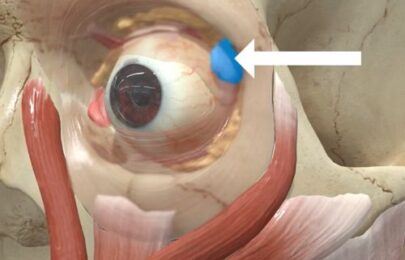 Bestseller
Bestseller
Avoiding Botox Eye Complications From Dry Eye to the ‘Psycho Look’
September 30, 2025


